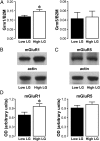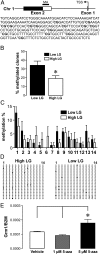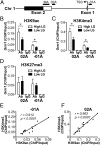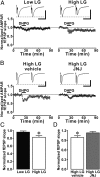Variations in postnatal maternal care and the epigenetic regulation of metabotropic glutamate receptor 1 expression and hippocampal function in the rat
- PMID: 23045678
- PMCID: PMC3477397
- DOI: 10.1073/pnas.1204599109
Variations in postnatal maternal care and the epigenetic regulation of metabotropic glutamate receptor 1 expression and hippocampal function in the rat
Abstract
Variations in maternal care in the rat affect hippocampal morphology and function as well as performance on hippocampal-dependent tests of learning and memory in the offspring. Preliminary genome-wide analyses of gene transcription and DNA methylation of the molecular basis for such maternal effects suggested differences in the epigenetic state and transcriptional activity of the Grm1 gene in the rat as a function of maternal care. Grm1 encodes the type I metabotropic glutamate receptor (mGluR1), and we found increased mGluR1 mRNA and protein in hippocampus from the adult offspring of mothers showing an increased frequency of pup licking/grooming (i.e., high-LG mothers) that was associated with a decrease in the methylation of Grm1. ChIP assays showed increased levels of histone 3 lysine 9 acetylation and histone 3 lysine 4 trimethylation of Grm1 in hippocampus from the adult offspring of high-LG compared with low-LG mothers. These histone posttranslational modifications were highly correlated, and both associate inversely with DNA methylation and positively with transcription. Studies of mGluR1 function showed increased hippocampal mGluR1-induced long-term depression in the adult offspring of high-LG compared with low-LG mothers, as well as increased paired-pulse depression (PPD). PPD is an inhibitory feedback mechanism that prevents excessive glutamate release during high-frequency stimulation. The maternal effects on both long-term depression and PPD were eliminated by treatment with an mGluR1-selective antagonist. These findings suggest that variations in maternal care can influence hippocampal function and cognitive performance through the epigenetic regulation of genes implicated in glutamatergic synaptic signaling.
Conflict of interest statement
The authors declare no conflict of interest.
Figures





References
-
- Cohen S, Janicki-Deverts D, Chen E, Matthews KA. Childhood socioeconomic status and adult health. Ann N Y Acad Sci. 2010;1186(Feb):37–55. - PubMed
-
- Hertzman C, Boyce T. How experience gets under the skin to create gradients in developmental health. Annu Rev Public Health. 2010;31:329–347, 3p following 347. - PubMed
-
- Evans GW. Child development and the physical environment. Annu Rev Psychol. 2006;57:423–451. - PubMed
-
- Adler NE, Rehkopf DH. U.S. disparities in health: Descriptions, causes, and mechanisms. Annu Rev Public Health. 2008;29:235–252. - PubMed
-
- Bradley RH, Corwyn RF. Socioeconomic status and child development. Annu Rev Psychol. 2002;53:371–399. - PubMed
Publication types
MeSH terms
Substances
Grants and funding
LinkOut - more resources
Full Text Sources
Other Literature Sources

